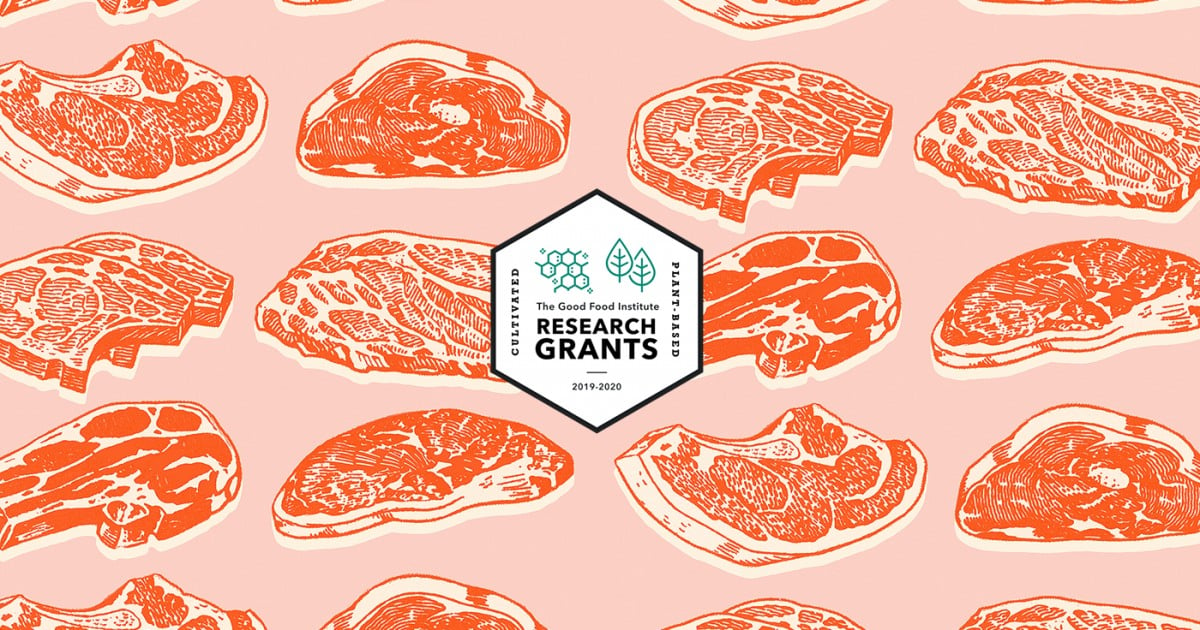This researcher is bringing protein innovation one step closer to plant-based steak

Getting the perfect, striated texture of muscle with plant-based meat is notoriously hard. It’s one of the hurdles that make plant-based steak an elusive technical challenge rather than a market reality.
Dr. Mario Martinez, however, is changing the game. He is using microstructure engineering and chemistry to give plant proteins the fibrous qualities of muscle tissue. Funded through GFI’s 2018-19 Competitive Research Grant Program, he and his team are doing open-access research that could advance extrusion technology for plant-based meat producers around the world. He shared the motivation behind his work and gave us an inside look at his team’s project below.
What sparked your interest to research plant-based meat?
According to FAO, the livestock sector is one of the major stressors of the planet. In November 2017, 15,364 world scientists signed a Warning to Humanity calling for—among other recommendations—drastically reducing global per capita consumption of meat and animal products. Unfortunately, most consumers enjoy the texture of meat, and many are disappointed with traditional plant-based protein products, such as tofu, which break apart easily and don’t provide the same sensory experience as meat from animals.
From the very beginning of my research career, even as a student, I was interested in sustainable food systems. My research focus has always been divided between understanding plant-based materials and developing technologies for sustainable food production. I soon realized that my expertise could help in the industrial production of plant-based meat. Our knowledge will hopefully result in the ultimate combination of ingredients and technologies for plant-based meat analogues.
What is the focus of your research project?
Our project addresses specifically the textural challenges of plant-based meat. We’re using a revolutionary method for producing plant protein ingredients, where forming actual nano-enhanced protein fibers (from the nanoscale up) is induced using widely available plant protein sources.
Different fibrous structures will produce “tissues” similar to beef, chicken, and fish, which can be further supplemented with specific flavors to make them taste like different types of meat. This process can be used for large-scale manufacturing of nutritious, protein-rich, plant-based meat at low costs. Our technology addresses the challenge of feeding the world’s population in the next 10 years.

How is Canada instrumental in advancing plant-based meat research?
We have a culture where food research is important for everybody, including the public administration and small-scale food producers. Therefore, it is easy for producers, processors, and researchers to stay connected. This relationship definitely speeds up our understanding of the market needs and enables us to establish feasible targets.
Canada is also a world leader in the production and sale of plant materials rich in proteins. We expect that our approach will give an opportunity for these crops to be considered as main ingredients of plant-based meat analogues in the near future. Our project could be particularly beneficial for the Canada Agri-Food sector.
What are the key structural differences between products made from plant proteins and those made from animal proteins?
We hope that these differences are reduced to a minimum—precisely the rationale of our research project. We are engineering these proteins at the micron- and submicron-scales. These building blocks have the lowest dimension in the lab (hundreds of nanometers small!).

How would this technology enhance the traditional extrusion processes?
We expect to be able to understand plant-based structures that are highly prone to be formed during extrusion technology. We aim to create our own nanostructured materials in upstream processing. We want to understand the chemistry behind every molecular interaction during processing, as we believe that extrusion alone cannot be fully exploited otherwise.

Can you describe the differences between the fibrous quality of beef, pork, and fish? Is one of these easier to achieve than the other?
This question is better answered by my colleague Professor Benjamin Bohrer, collaborator in this GFI project. I am very proud and happy to have his support as a meat science expert. He says that between animal species, the sarcomere (functional unit of a muscle) is generally the same. The other components of meat, including the connective and fat tissues surrounding the muscle fibers, can be different. In land animal species (cows, pigs, goats, etc.), the difference is minimal. On the other hand, connective and fat tissue are very different between aquatic and terrestrial species because of how the animal functions. Fish muscles do not spend their lives working against gravity like muscles of live animals would. This makes their connective tissues much more delicate and they differ slightly in strength, which impacts texture or tenderness.
In terms of technology, I would say that both are equally difficult or easy to achieve. What matters is finding the right molecular assembly for each fibrous structure.
Which plant proteins are you working with for this research and why?
We aim to screen a large range of materials and are not limited to any particular one at this point. We are open to any source of edible biopolymers, not just proteins from cereals and pulses. Once we understand the structures of the foods, we will narrow the search to create the best plant-based whole muscle tissue.
Dr. Martinez is a GFI grant recipient building a better food system with open-access research for alternative protein innovation. Stay tuned for updates from the second year of our competitive grant program!

